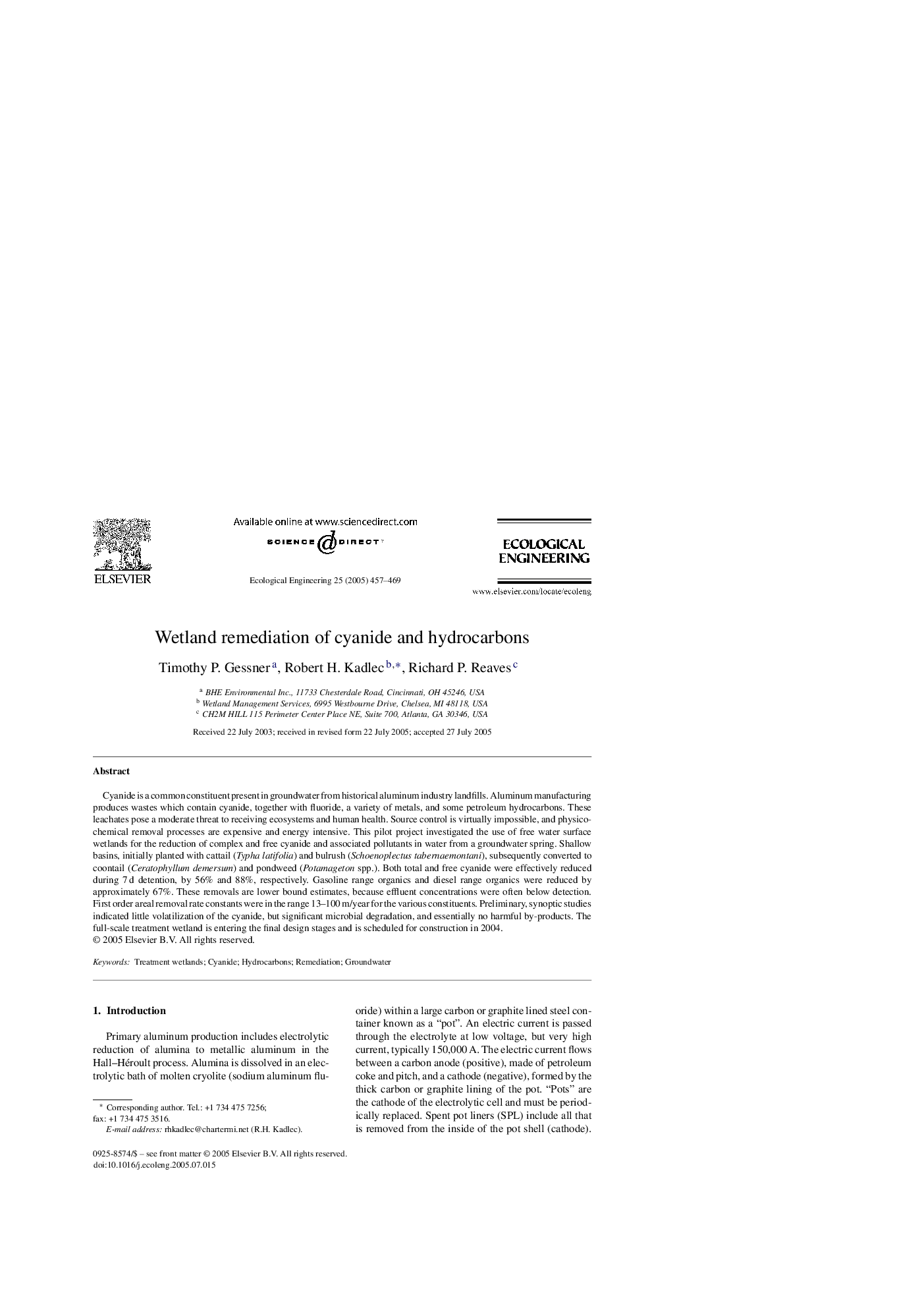| Article ID | Journal | Published Year | Pages | File Type |
|---|---|---|---|---|
| 9447569 | Ecological Engineering | 2005 | 13 Pages |
Abstract
Cyanide is a common constituent present in groundwater from historical aluminum industry landfills. Aluminum manufacturing produces wastes which contain cyanide, together with fluoride, a variety of metals, and some petroleum hydrocarbons. These leachates pose a moderate threat to receiving ecosystems and human health. Source control is virtually impossible, and physico-chemical removal processes are expensive and energy intensive. This pilot project investigated the use of free water surface wetlands for the reduction of complex and free cyanide and associated pollutants in water from a groundwater spring. Shallow basins, initially planted with cattail (Typha latifolia) and bulrush (Schoenoplectus tabernaemontani), subsequently converted to coontail (Ceratophyllum demersum) and pondweed (Potamageton spp.). Both total and free cyanide were effectively reduced during 7Â d detention, by 56% and 88%, respectively. Gasoline range organics and diesel range organics were reduced by approximately 67%. These removals are lower bound estimates, because effluent concentrations were often below detection. First order areal removal rate constants were in the range 13-100Â m/year for the various constituents. Preliminary, synoptic studies indicated little volatilization of the cyanide, but significant microbial degradation, and essentially no harmful by-products. The full-scale treatment wetland is entering the final design stages and is scheduled for construction in 2004.
Related Topics
Life Sciences
Agricultural and Biological Sciences
Ecology, Evolution, Behavior and Systematics
Authors
Timothy P. Gessner, Robert H. Kadlec, Richard P. Reaves,
